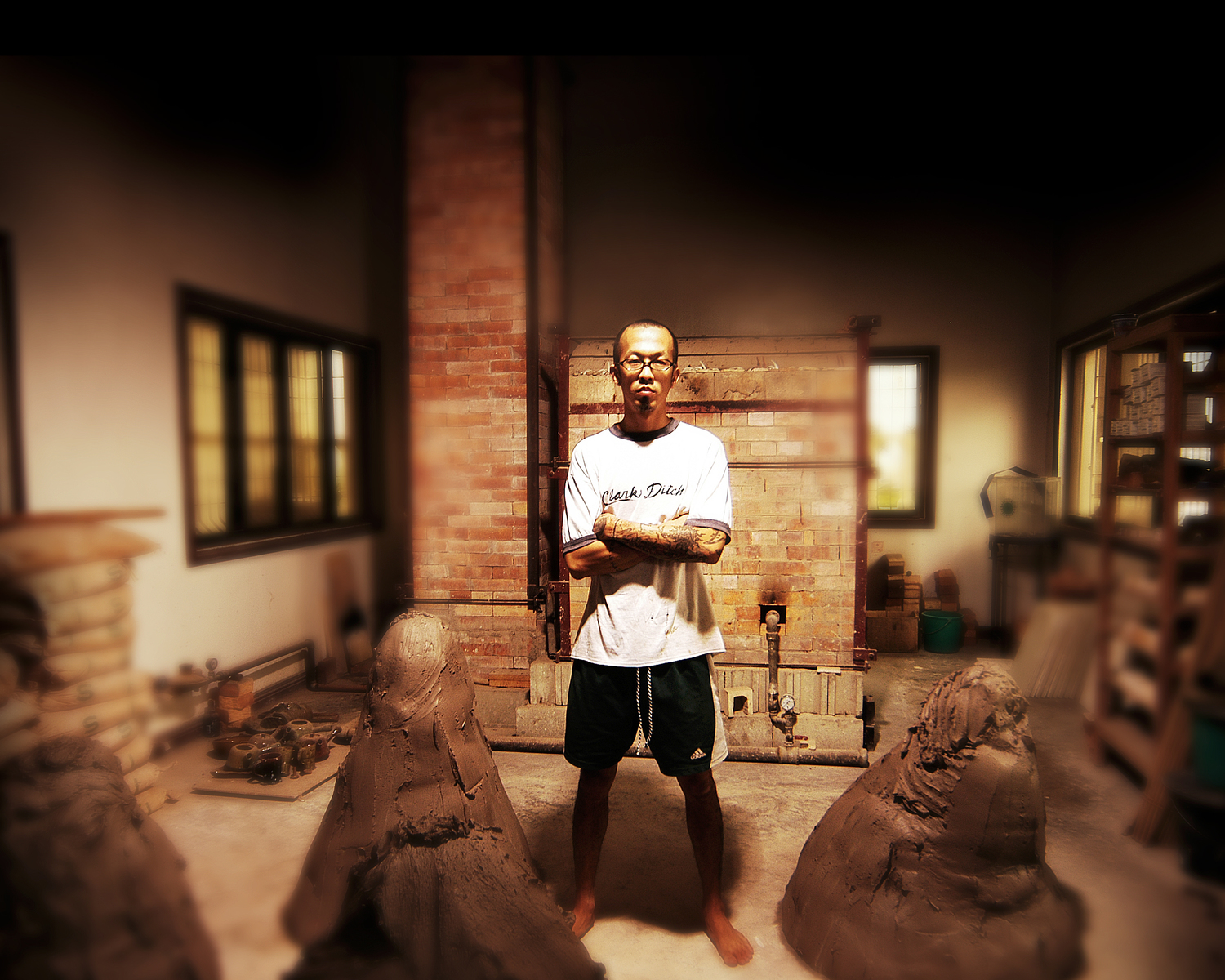"Master's Apprentice" The Philippine Enquirer November 7, 2004 by Joy Rojas
It was meant to fill up a light semester, this pottery course that Hadrian Mendoza took during his last year in college in 1995. So imagine everyone's surprise when he, a US-based business major who set his sight on becoming a chef, junked all his grand plans to pursue a passion he didn't know he had.
"I was hooked. I liked working with the material from day one," says Mendoza, whose only two experiences with pottery then were molding colorful Playdoh as a child and living in a home teeming with his mother's antique jar collection. "Although my works weren't really good at the time and I knew that being a potter was going to be hard, my professor told me, "Stick with it because you're going to be good at it someday."
Nine years later, Mendoza finds himself in the middle of his most important show to date- a back-to-back exhibition with Jon Pettyjohn at the Art Space in Glorietta 4, Ayala Center, Makati. It is a match-up both daunting and inevitable, with his modern stoneware platters and vases displayed to Pettyjohn's traditional pots and jars. Mendoza, who taught pottery in camps and community centers in Virginia, served as an apprentice for eight months in 1997 to Pettyjohn, whose name and the word "pottery" are practically interchangeable in the local art scene. For Mendoza, sharing the spotlight with a man "who set the bar on how a potter should be, has challenged me to push myself further and put out my best works yet."
He's certainly got the technique down pat; making his own clay, one of many thing he learned from Pettyjohn, is now deemed "second nature." For now, the struggle, he admits, lies in "trying to figure out what a Filipino pot is like, so when someone sees your work, he knows instantly that it comes from this region. I don't know if I'm successful at that."
Mendoza was halfway around the world when he arrived at an epiphany. Back in the States after apprenticing with Pettyjohn, "It suddenly dawned upon me," says Mendoza, " how I've always been taught that ceramics reflects the way people lived at a certain age and time- why they made their pots, burial jars and idols the way they did. Knowing that pottery and culture are intertwined, I realized then that I would be lying to myself as an artist if I worked with clay in a place where I wasn't born. That's the reason I came back. To find my culture."
Mendoza, in fact, would find more than his culture upon his return; he found a home, setting up a school with Pettyjohn in Greenbelt, Makati in November 1999, and a studio with a gas fire kiln in Makiling, Laguna, where he resides. Today, the young potter teaches twice weekly in Makati and on Sundays since October, at the prestigious Makiling School of the Arts. "I still have a lot to learn," says Mendoza who also offered the pottery course in UP. "But I know enough to teach kids to open their minds about the possibility that pottery may be the art for them. Don't leave your options to just painting, sculpture, metal or wood. Give this a chance and see what clay can do for you."
Tattoos streaming from his arms up to his fingers suggest a tough, rebel streak. But Mendoza, nephew of famed Floral Architect of the Philippines Rachy Cuna, is actually a gentle soul who leans towards wholesome, outdoor activities. He plays basketball and badminton, walks his two Rottweilers, and likes to go on long drives whenever he needs breathing space from work. He also likes to listen to Pinoy rock (Bamboo and Kapatid are on his playlist) and used to hang around a lot with bands. But those days are over since "it kind of messes up my schedule at work."
Shrugs Mendoza, who speaks with an American twang: "Ganoon, eh, that's all i do. I don't drink and i don't go to bars. My life revolves around pottery. It sounds sad," he observes with a laugh, "but actually it's not."
The element of surprise is what piques this potter's interest; the irony that no matter how much control you exercise over the clay, the final results are almost always, literally out of your hands. Surveying his stoneware pieces, the would-be chef who walked into a pottery class nine years ago says, "Nothing here has been set in stone in my mind before it was made. Zero. In pottery, you have to respect the fire and the way the clay behaves. You also have to be very patient and forgiving of your medium. Of course, you're always hoping that things work out the way you want it. But when it doesn't, you just have to accept it as neither bad nor good."
Reflects Mendoza: "That's the high that you never lose. Whenever I feel drained from work, I open up my kiln and I'm reminded of why I am here."
